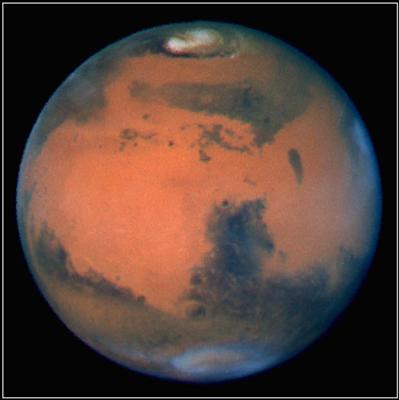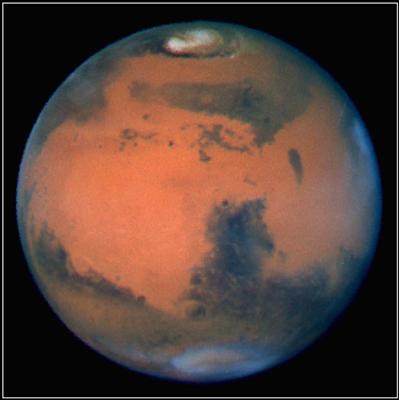August 21, 2003
Astronomers celebrate proximity of Mars
Late this month, the night sky will brighten with the closest approach of Mars since human ancestors were still living in caves 60,000 years ago.
In late August and early September, the red planet will appear closer and brighter than it has throughout all of recorded history, and astronomers with the UW and the Seattle Astronomical Society will provide front-row seats for the public during a special “Mars Party” on Sept. 3.
“Starting Aug. 15, Mars began rising at 8:30 in the evening and ascending to easy visibility by 10 p.m.,” said Bruce Balick, UW astronomy chairman. “Mars’ closest approach to Earth will be 35 million miles, or 150 times farther than the moon. Typically, the planet’s closest approach is about 49 million miles.”
Mars will reach maximum brightness on Aug. 27, but just a week later it will rise even sooner and start to fade as the Earth pulls away from the Martian orbit, Balick said. Mars was already rising by 9:30 p.m. before Aug. 15 and could easily be seen low in the southeast sky by 11 p.m. It is the brightest star-like object in the sky (only the moon is brighter) and its orange color is unmistakable.
The free Mars party on Sept. 3 will begin at 9 p.m. with a presentation by UW astronomy lecturer Toby Smith in 130 Kane. Smith will present recent spacecraft images of Mars, discuss results from various Mars missions, and talk about plans to search for water and life when two Mars rovers land in January.
Telescopes will be set up outside Kane Hall on Red Square, providing close-up views of the red planet in the southeast sky over Mount Rainier until 10:30 p.m.
Earth and Mars orbit the Sun in the same direction, but Earth has a faster orbital speed and every two years it overtakes Mars from behind.
Since both planets are in elliptical orbits in slightly different orbital planes, some close approaches are closer than others. The approach this summer, in addition to being the closest in the last 600 centuries, also will be the closest until 2287, Balick said. At its closest approach, Earth lies directly between the sun and Mars, so the best view of Mars is about 1 a.m. daylight savings time.
Parking for the Mars party will be available in the Central Plaza Garage beneath Red Square. More information about the event and the close approach of Mars is available on the Internet at http://www.astro.washington.edu/dept/mars_opposition.html.


